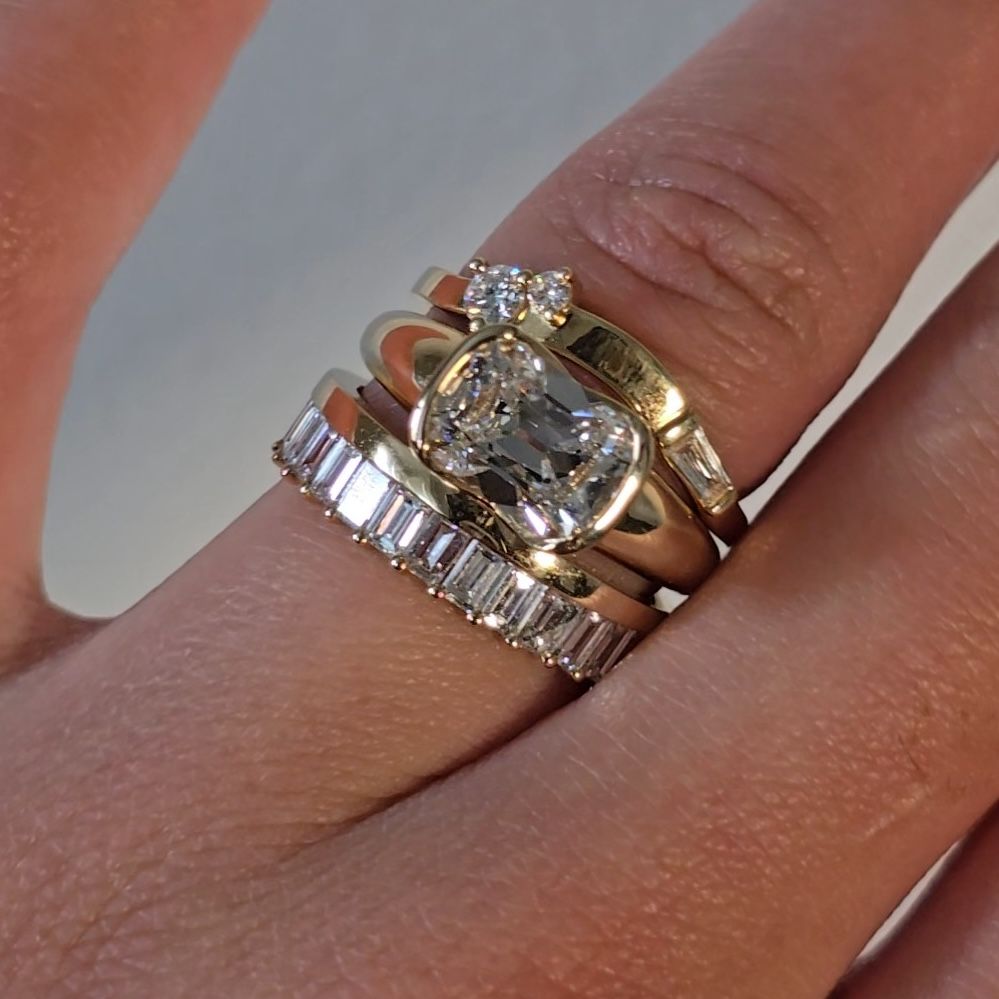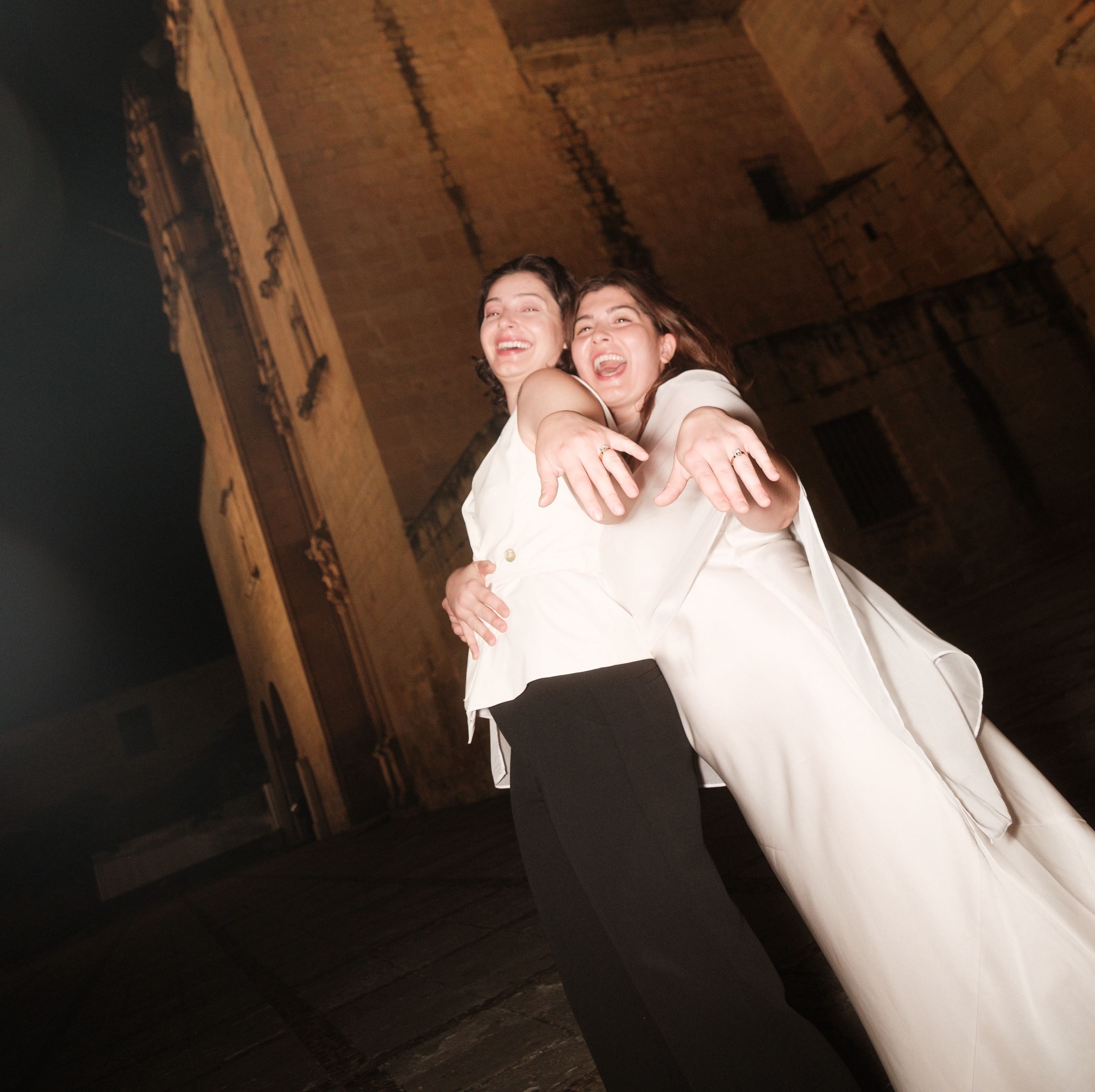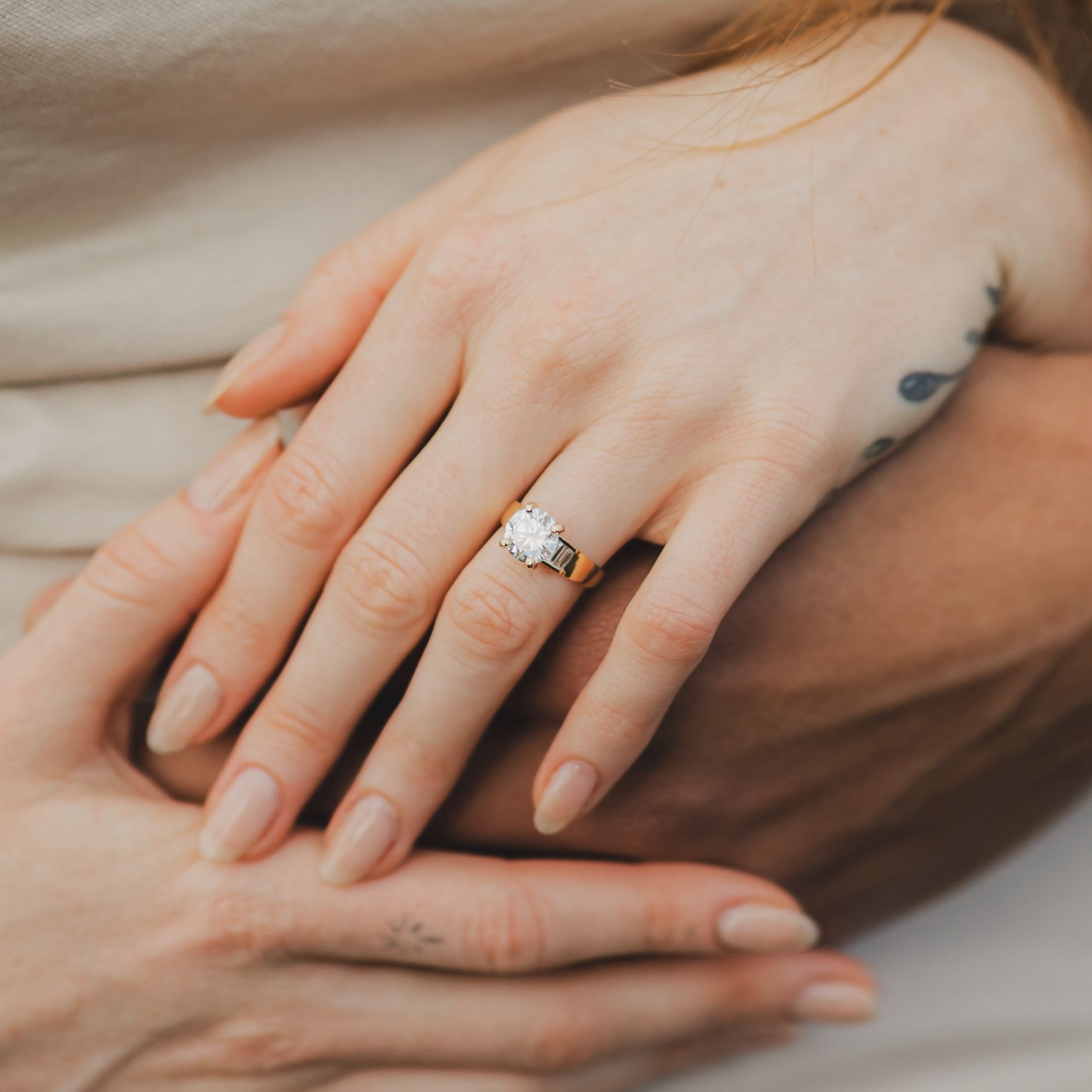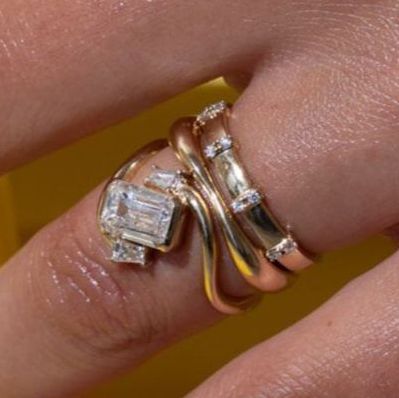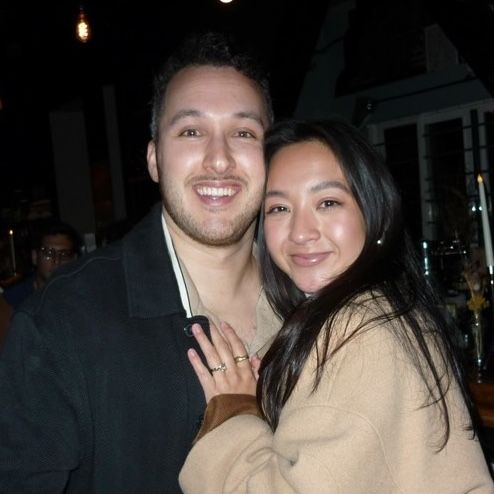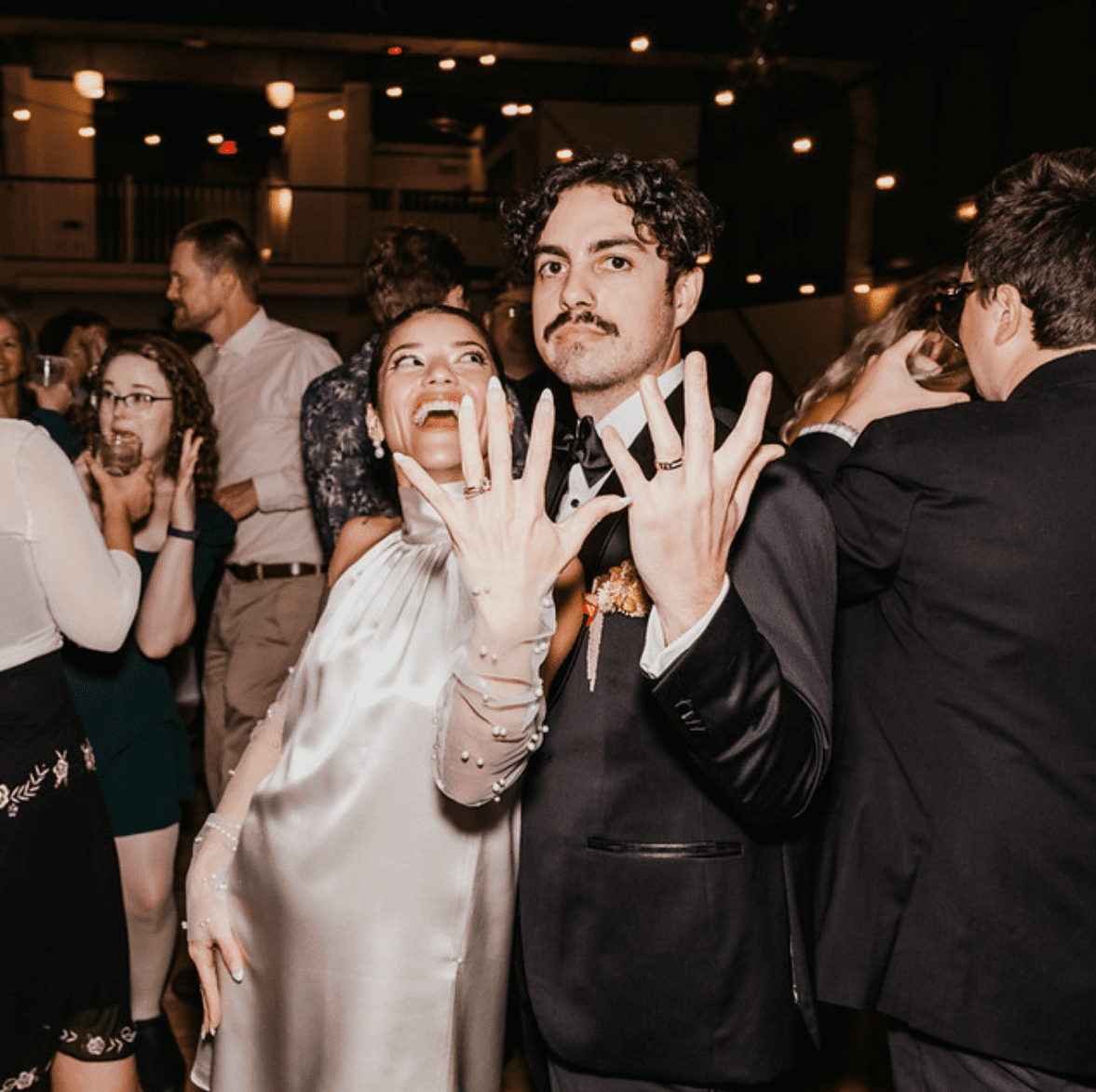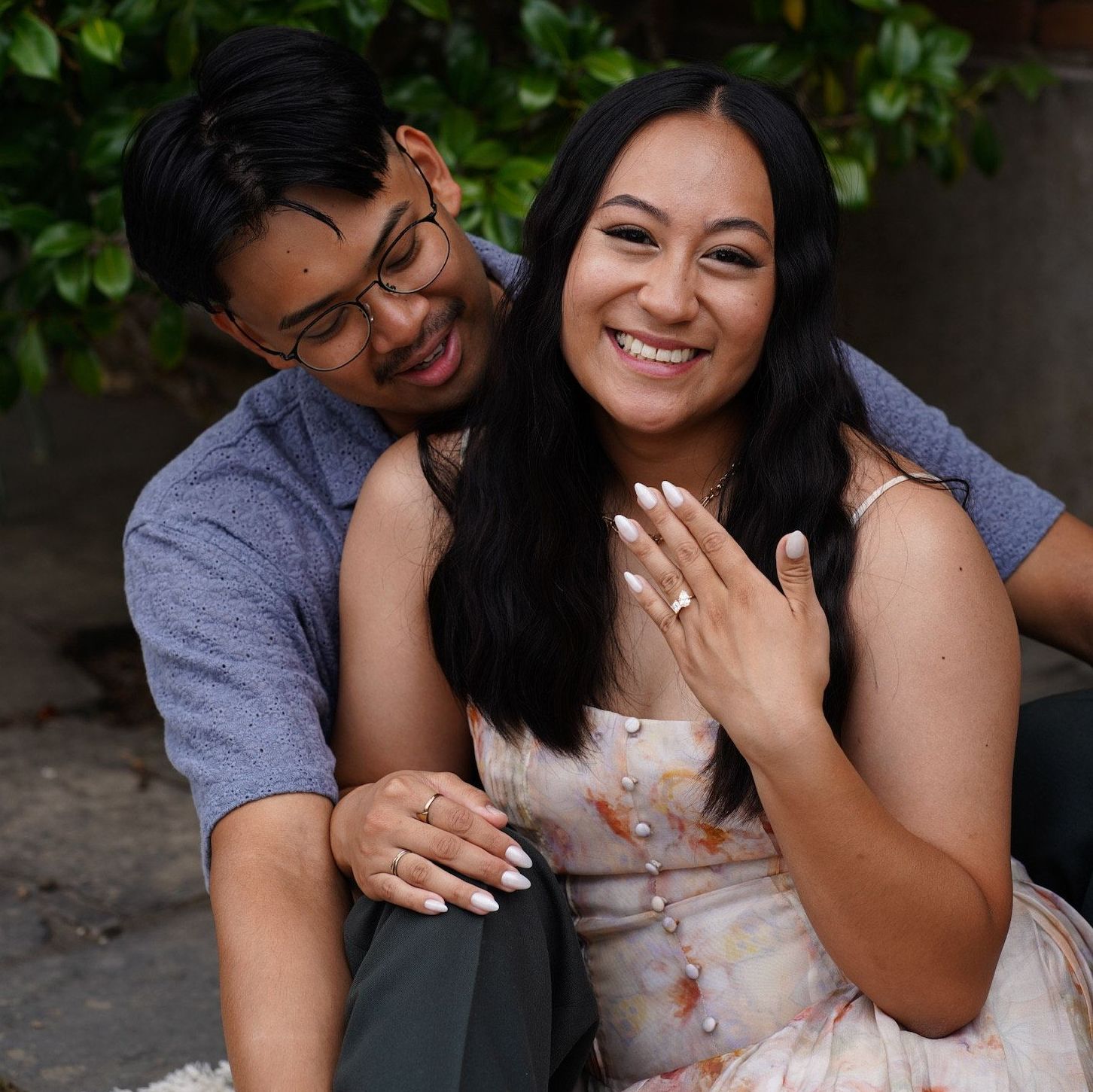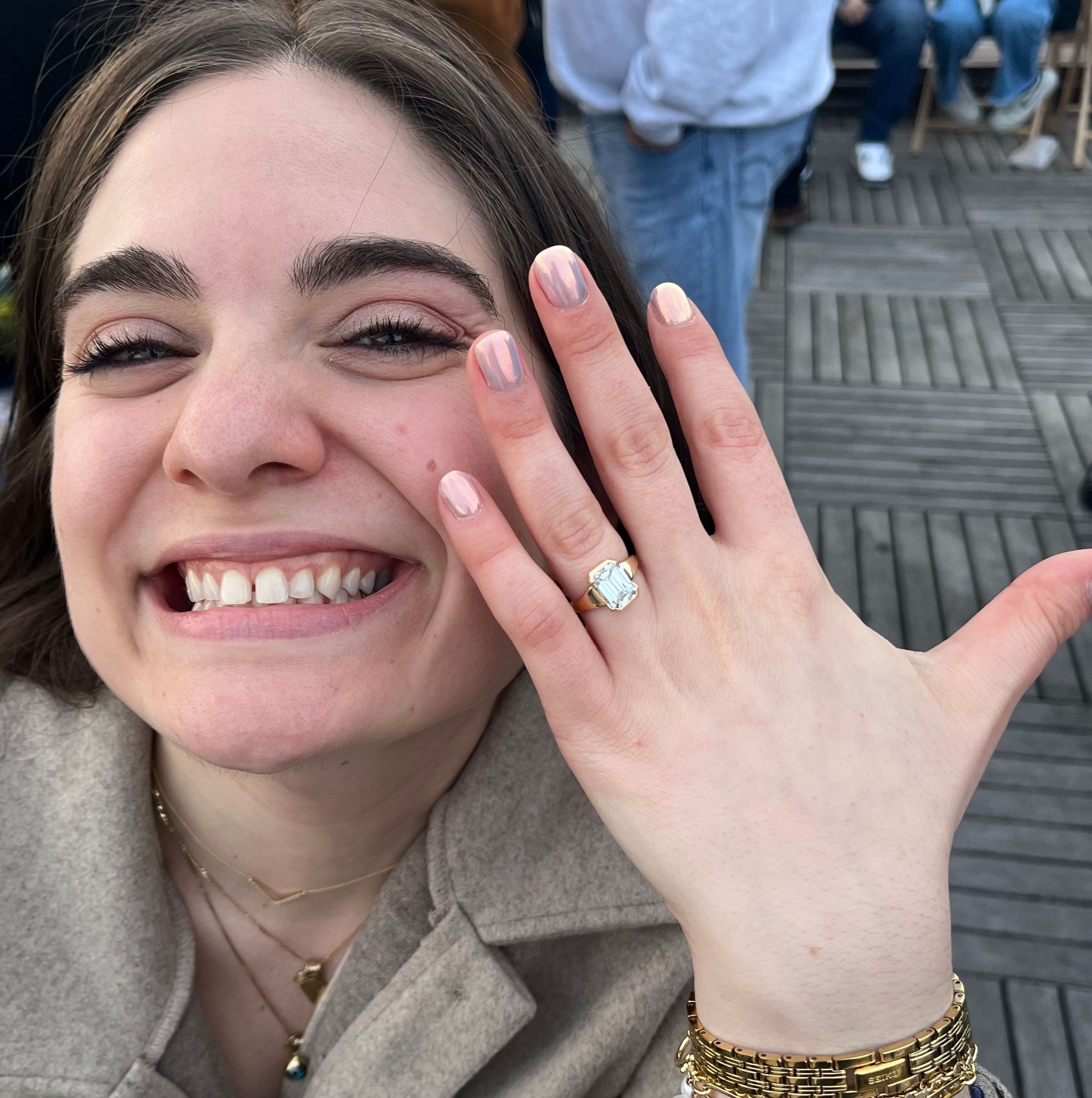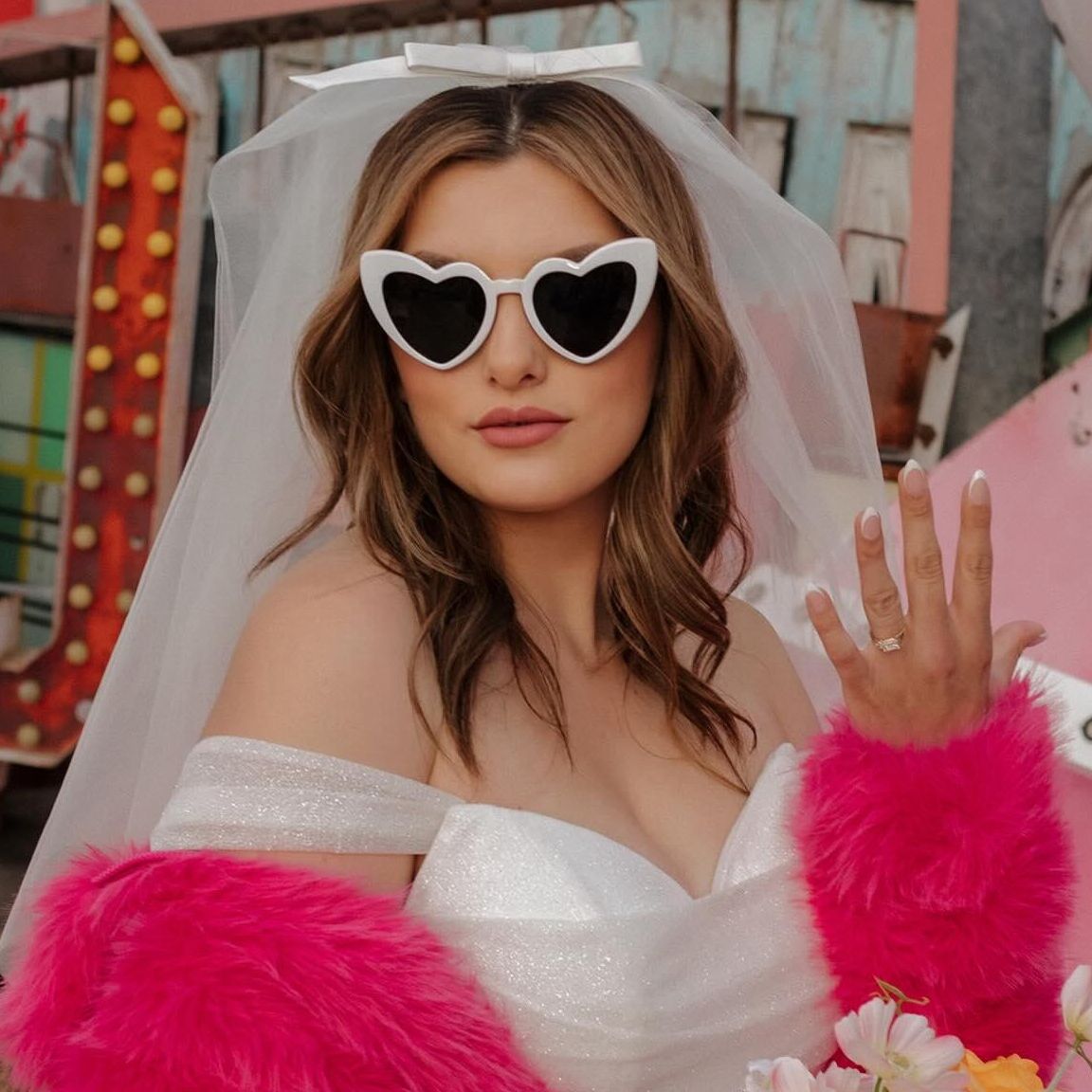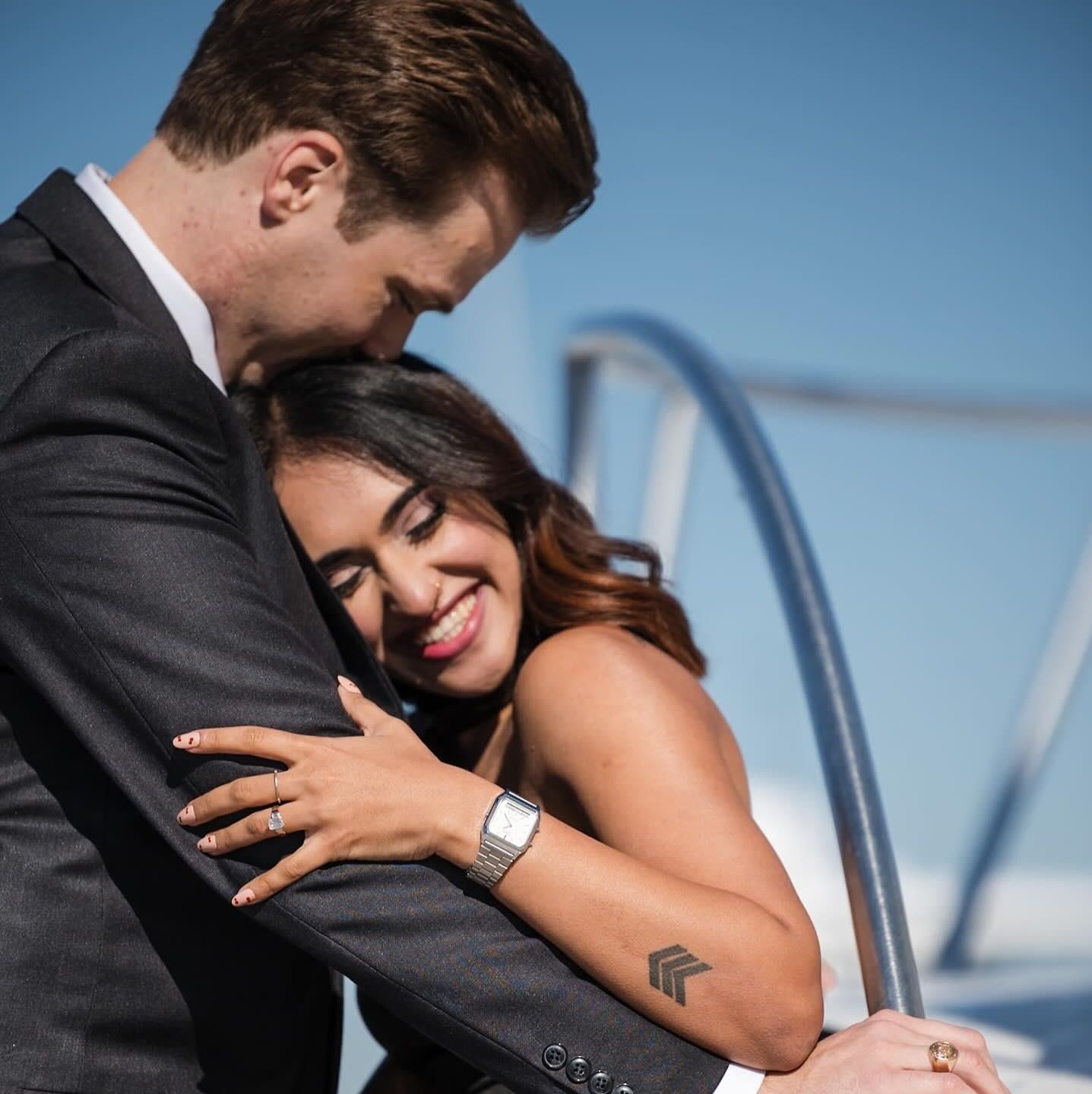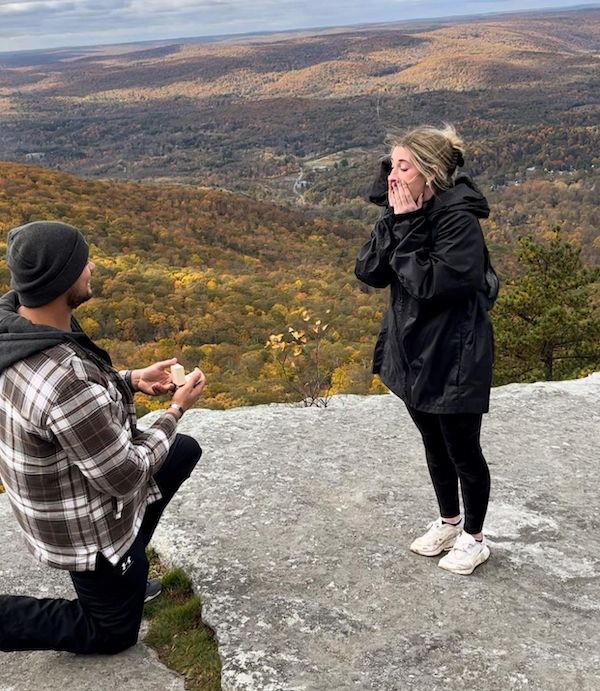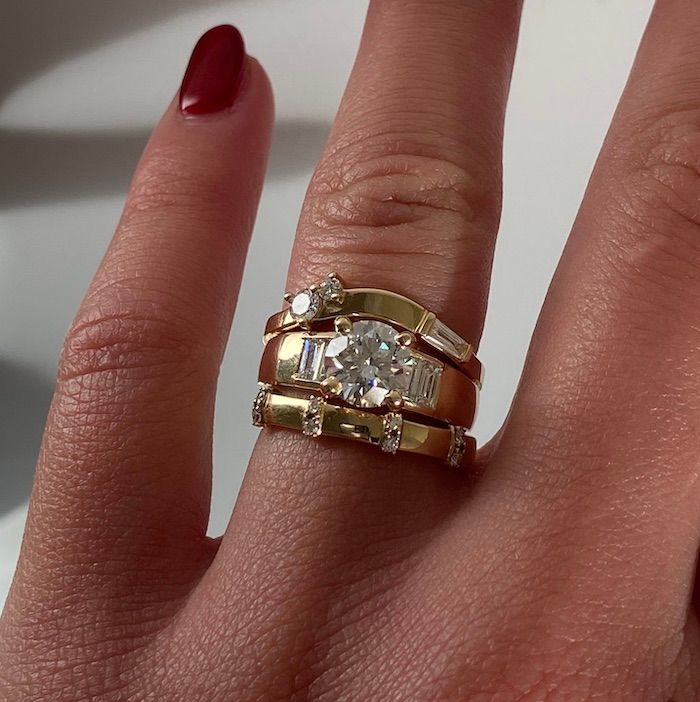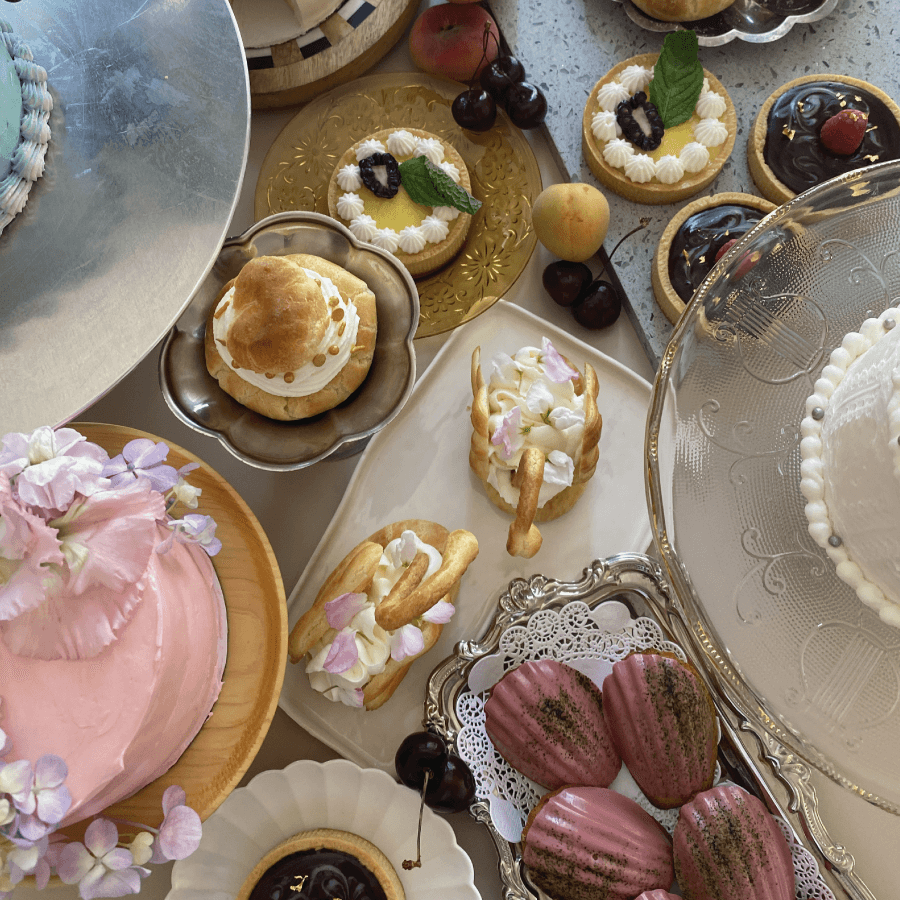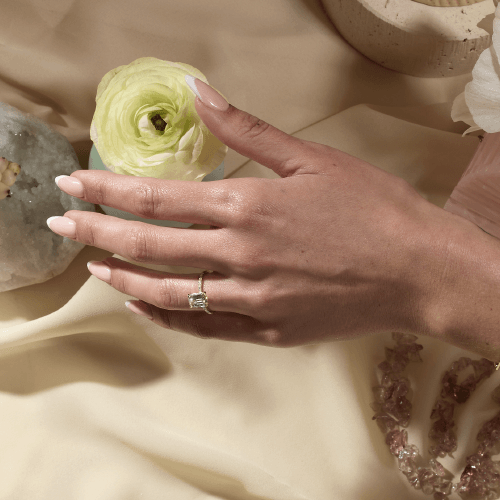
A Short and Sparkly History of the Engagement Ring
The history of the engagement ring is almost as old as marriage itself, though in ancient Rome it was unlikely there was a hired photographer waiting in the bushes for the great reveal. Back then, a ring may have symbolized the wedding’s financial transaction between two families, or as a symbol of the marriage’s unbroken bond. The ring’s purpose had multiple possibilities, writes historian Karen K. Hersch in The Roman Wedding.
Very early engagement rings were likely made of bone, ivory, or iron. Gold, silver, and bronze entered the scene in around the second century CE. Archaeologists have uncovered Roman rings engraved with two conjoined hands (also known as a “fede” ring), while some included gems, all of which could have served as wedding rings, Hersch explains. It wasn’t until the seventh century that the scholar Isidore wrote of the engagement ring being placed on the fourth finger of a woman’s left hand, believing that vein directly linked to her heart. (In a way…they all do.)
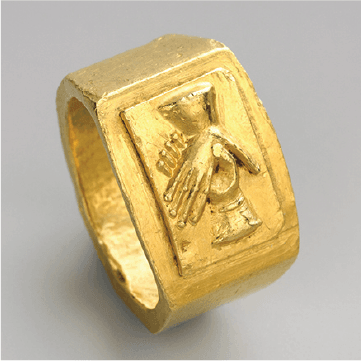
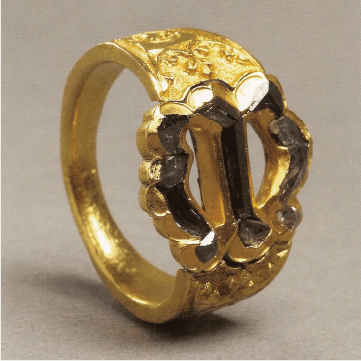
Fast forward a few centuries to 1477, when many jewelry historians point to the ring that played a part in the marriage of Maximilian of Austria to Mary of Burgundy, a gold ring in the shape of the letter M and embedded with diamonds that appear almost as flattened glass, not cut in the way we know them today. That famous ring was said to be a symbol of their betrothal and set off the diamond engagement ring tradition, though in Diamonds: An Early History of the King of Gems, Jack Odgen points to other diamond wedding rings that existed before and around the same time.
So we can’t give Maximilian all the credit. Diamonds likely became “the king of gems” due to their invincibility and sparkle, making them both a practical and symbolic choice for engagement and wedding rings.
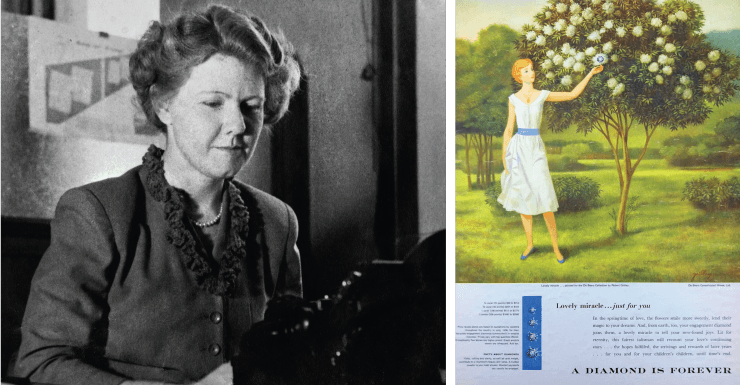
The endurance of the diamond engagement ring was then solidified by De Beers’ “A Diamond Is Forever” campaign, which launched in 1948 and was declared the slogan of the century by Ad Age.
De Beers began mining diamonds in the mid-1800s, making the rare gem more available, at least for those who could afford one. By the end of the century, Tiffany had introduced its iconic six-prong engagement ring setting, displaying a solitaire diamond high in an open basket that allows light to hit and reflect off the stone. Diamond rings continued to rise in popularity in the 1910s and 1920s.
When the Great Depression hit, sales slowed. De Beers’ “A Diamond Is Forever” campaign, written by Frances Gerety, turned that all around. The campaign told poetic love stories centered around engagement rings, but it also introduced the concept of the “4 C’s” instructing readers to look not just for carat size, but cut, clarity, and color too.
In the 1980s, De Beers ads also introduced the notion that engagement rings should cost two months’ salary, ingraining the idea that this piece of jewelry should be a financial sacrifice, an extravagant purchase that quite literally put a price on love. In 2021, a study by The Knot found that 86 percent of engagements included a diamond ring and that its average cost was $6,000.
The growing popularity of lab-grown diamonds may soon change that, as jewelers (including here at Eliette) untangle that expectation, making the diamond engagement ring more accessible and affordable than ever, while the ring’s long and symbolic history endures.
Further reading:

